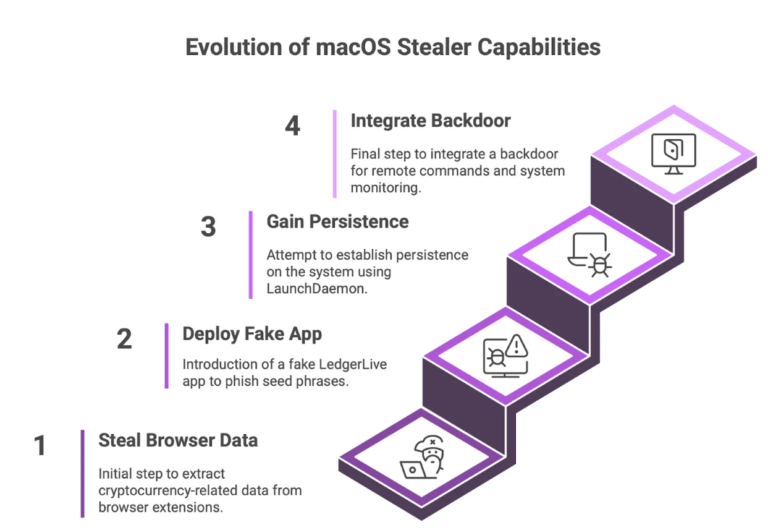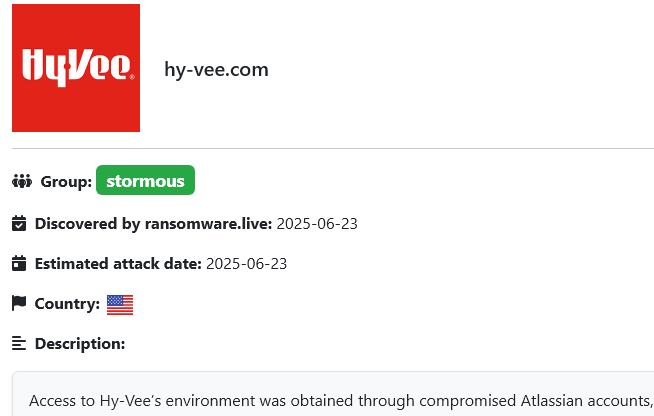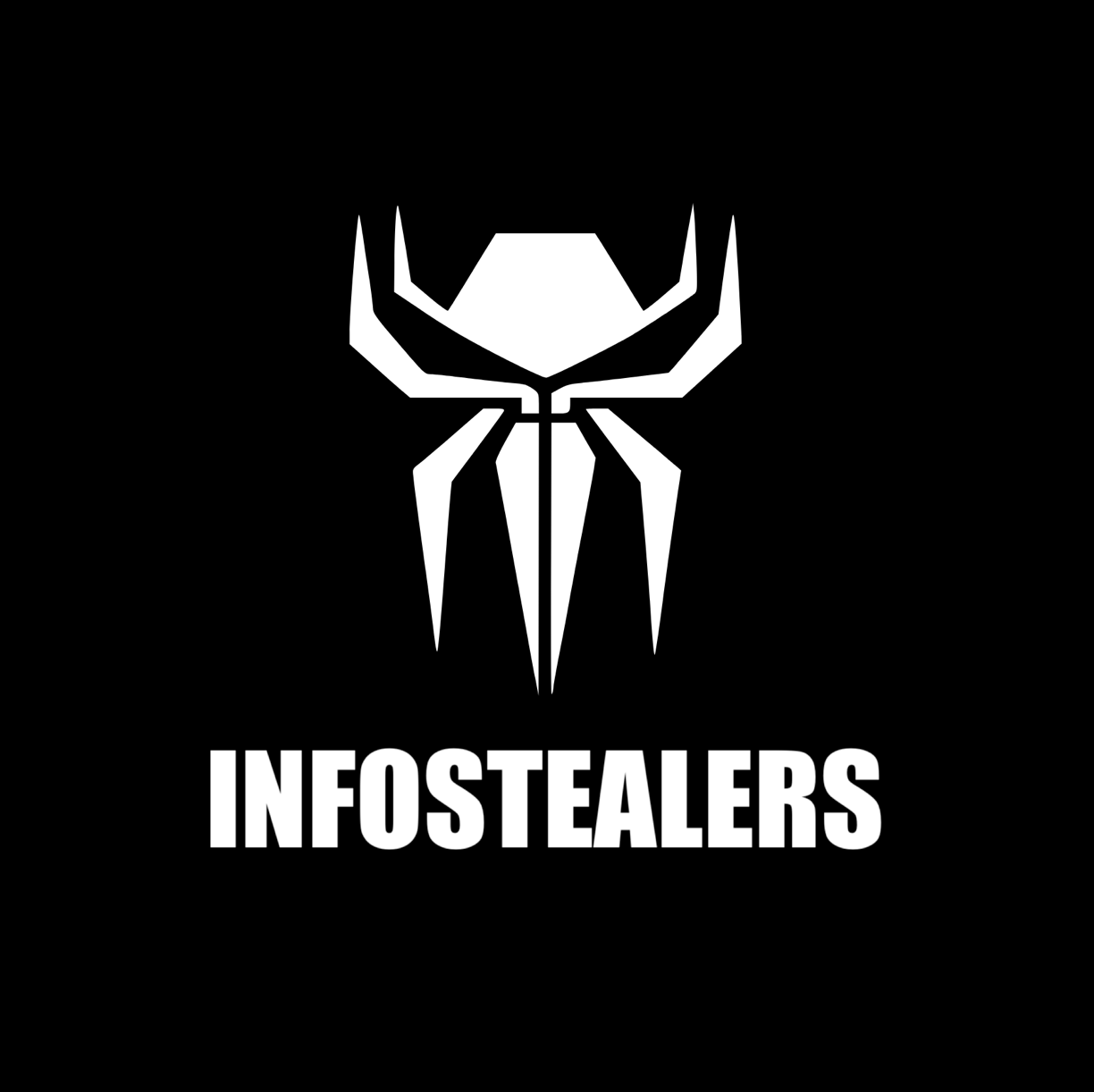Executive Summary
On Tuesday, June 18th, 2024, Rapid7 initiated an investigation into suspicious activity in a customer environment. Our investigation identified that the suspicious behavior was emanating from the installation of Notezilla, a program that allows for the creation of sticky notes on a Windows desktop. Installers for Notezilla, along with tools called RecentX and Copywhiz, are distributed by the India-based company Conceptworld at the official domain conceptworld[.]com. After analyzing the installation packages for all three programs, Rapid7 discovered that the installers had been trojanized to execute information-stealing malware that has the capability to download and execute additional payloads.
Disclosure
On Monday, June 24th, 2024, Rapid7 contacted Conceptworld to disclose the backdoored installers being hosted on conceptworld[.]com in accordance with Rapid7’s vulnerability disclosure policy. Within 12 hours, Conceptworld confirmed and remediated the issue by removing the malicious installers from conceptworld[.]com and replacing them with legitimate, signed copies. Rapid7 is grateful to Conceptworld for their prompt action on this issue.
Overview
Conceptworld is an India-based company offering three different software products: Notezilla, which allows users to create sticky notes on a Windows desktop; RecentX, which stores recently used files/applications/clipboard data; and Copywhiz, which improves file copying and backup operations. A free trial download is available on the official conceptworld[.]com site for each software package.
The installation packages being served by conceptworld[.]com at the time of investigation, however, executed malware alongside the legitimate installer, were not signed, and did not match the file size stated on the download page. The differences in the file sizes are due to the malware and its dependencies, which increases the size of the compromised installation packages.
| Filename | SHA256 Hash | Filesize | Notes |
|---|---|---|---|
| NotezillaSetup.exe | 6f49756749d175058f15d5f3c80c8a7d46e80ec3e5eb9fb31f4346abdb72a0e7 | 17.07 MB | Trojanized. |
| NotezillaSetup.exe | 51243990ef8b82865492f0156ebbb23397173647c02a0d83cf3e3dfb4ef8a6bc | 15.19 MB | Legitimate, signed by Conceptworld. |
| RecentXSetup.exe | 4df9b7da9590990230ed2ab9b4c3d399cf770ed7f6c36a8a10285375fd5a292f | 15.79 MB | Trojanized. |
| RecentXSetup.exe | a6ad6492e88bdb833d34ac122c266f1fadd9509ecfe0246e283728e4af49f433 | 13.92 MB | Legitimate, signed by Conceptworld. |
| CopywhizSetup.exe | 2eae4f06f2c376c6206c632ac93f4e8c4b3e0e63eca3118e883f8ac479b2f852 | 14.14 MB | Trojanized. |
| CopywhizSetup.exe | fd8d13123218f48c6ab38bf61d94113b4d97095e59fb415e6aa5d9ada012206e | 12.27 MB | Legitimate, signed by Conceptworld. |
The malware Rapid7 observed contains the functionality to steal browser credentials and crypto currency wallet information, log clipboard contents and keystrokes, and download and execute additional payloads. After infecting a system, the malware persists via a scheduled task that executes the primary payload every three hours.
Based on file submissions to VirusTotal, the malicious copies of the installers have existed since early June of 2024. The malware payloads delivered by the trojanized installers, however, seem to belong to a nameless malware family that has been in distribution since at least January of 2024. Rapid7 internally refers to this malware family as dllFake because of the naming scheme used for several of the malware payloads.
| Malicious installer name | VirusTotal First Submission |
|---|---|
| NotezillaSetup.exe | 2024-06-10 06:43:34 UTC |
| RecentXSetup.exe | 2024-06-07 21:38:11 UTC |
| CopywhizSetup.exe | 2024-06-08 07:25:17 UTC |
Technical analysis
To take a deeper look at the malware payloads, we will analyze the malicious installer that was served for Notezilla.
Initial Access
Rapid7 determined that trojanized installers for the 32-bit and 64-bit versions of Notezilla, Copywhiz, and RecentX were, at the time of investigation, being served from the official website conceptworld[.]com. Any users searching for this software via a popular search engine at the time were most likely to find the official domain as the first result, which would then have directed them to download the malware.
Execution
The installer served by conceptworld[.]com for Notezilla at the time of investigation was NotezillaSetup.exe, which, based on static analysis, is packed using software called Smart Install Maker(5.04).

Figure 1. Software Properties of NotezillaSetup.exe.
Using the sim_unpacker plugin for the tool UniExtract2, we were able to unpack and acquire most of the contents of the installation package, such as the embedded files and configuration information. The configuration file contains references to the legitimate software installer for Notezilla, which is dropped into %TEMP% during execution, and multiple files that are dropped into the installation directory (i.e., staging folder) %LOCALAPPDATA%\Microsoft\WindowsApps\ during execution.
| Installer Files |
|---|
| curl.exe |
| 7z.exe |
| dllBus.bat |
| dllBus32.exe |
| dllCrt.bat |
| dllCrt.xml |
| dllCrt32.exe |
| dll_apps.txt |
| dll_srv.txt |
| dll_updt.txt |
| NotezillaSetup.exe |

Figure 2. Output from Using the sim-unpacker tool.

Figure 3. Contents of installer.config.
Once executed, NotezillaSetup.exe will then execute the file dllCrt32.exe from the staging directory %LOCALAPPDATA%\Microsoft\WindowsApps\ via a WINAPI call to ShellExecuteA with the verb open. A second call is then made to ShellExecuteA to execute the file NotezillaSetup.exe, a copy of the legitimate installer, from %TEMP%. As a result, the only thing seen by the end user after initial execution is the installation window pop-up for the legitimate installer, prompting the user to proceed with the installation process for Notezilla.

Figure 4. Typical Process Tree for Initial Execution of the Trojanized Installer.

Figure 5. The User’s View after the Infection has Already Begun in the Background.
The file dllCrt32.exe is a relatively small (~10KB) program that only serves as a wrapper to call CreateProcessA to execute the file dllCrt.bat.

Figure 6. The Contents of dllCrt.bat.
The batch file dllCrt.bat will then create a hidden scheduled task named Check dllHourly32 using schtasks.exe and an XML file that was previously dropped into the staging directory at %LOCALAPPDATA%\Microsoft\WindowsApps\dllCrt.xml. The scheduled task Check dllHourly32 will then execute the file %LOCALAPPDATA%\Microsoft\WindowsApps\dllBus32.exe every three hours after being initially created, which means that the primary malware payload will not be executed until at least three hours after the user originally executed the trojanized installer.

Figure 7. Command Line Assembly within dllBus32.exe.
When dllBus32.exe is executed, it also serves as a small wrapper for calling CreateProcessA, though it initially retrieves several important command line parameters. First, a call to the CRT library function sprintf concatenates a hard-coded IPv4 address. Then, a second call to sprintf concatenates the assembled IPv4 address with several other arguments to be passed to the batch file dllBus.bat. Finally, CreateProcessA is called with the fully assembled command line.

Figure 8. The Initial Lines of dllBus.bat.
The command line arguments passed to dllBus.bat via dllBus32.exe contain an IPv4 address, an SFTP port, a password for ZIP archive payloads, two sets of SFTP credentials, and the staging directory where the majority of the malware’s files are located.
| Argument # | Purpose | Value | Notes |
|---|---|---|---|
| 1 | C2 IPv4 Address | 212.70.149[.]210 | Stored within dllBus32.exe. |
| 2 | SFTP Port | 2265 | Used for all curl requests regardless of the IPv4 address. |
| 3 | ZIP password | MnX!8fsGt0@ | Used to decrypt/extract downloaded archives. |
| 4 | SFTP Username | phn_sys | The SFTP credentials used for uploading stolen data. |
| 5 | SFTP Password | Password for phn_sys. | |
| 6 | SFTP Username | phn_prj | The SFTP credentials used for downloading payloads. |
| 7 | SFTP Password | Password for phn_prj |
The batch file dllBus.bat contains functionality to facilitate the theft of information from Google Chrome, Mozilla Firefox, and multiple cryptocurrency wallets. The copy of curl.exe dropped by the installer is also used to connect to a list of command-and-control (C2) addresses hosting SFTP servers. The curl commands are used to download an updated list of C2 addresses, stored as plaintext within the file dll_srv.txt, and to download and execute additional payloads saved within encrypted ZIP archives named Updt.zip, Apps.zip, and BB.zip. The batch script will also attempt to compress all files on the infected system that have specific file extensions and exist in directories that are not on a hardcoded blacklist (for exfiltration). All stolen data is ultimately compressed using 7z.exe and uploaded directly to the selected C2 SFTP server using curl.
| Targeted Browsers |
|---|
| Mozilla Firefox |
| Google Chrome |
| Targeted Crypto Wallets |
|---|
| Atomic |
| Exodus |
| Jaxx Liberty |
| Guarda |
| Electrum |
| Coinomi |
| Targeted File Extensions | Blacklisted File Path Strings |
|---|---|
| txt,doc,png,jpg | “*icrosoft*”,”*indows*”,”*otoshop*”,”*rogram Files*”,”*rogramData”,”All Users”,”AppData”,”Default”,”Public” |
The payloads Apps.zip and Updt.zip both contain executables created using PyInstaller, which means the original Python script used to create the executables can be recovered trivially using a publicly available extractor. The payload dllChrome32.exe, contained within Updt.zip, is used to facilitate theft of credentials from Google Chrome’s database that are then saved into the file %TEMP%\chrm.txt with the format: URL, Username, Password.

Figure 9. Primary Functionality of dllChrome32.exe.
The payloads dllTemp32.exe and dllCache32.exe stored within Apps.zip contain a clipboard stealer and a keylogger, where the results are saved to the files cl.txt and kl.txt, respectively, within the staging directory at %LOCALAPPDATA%\Microsoft\WindowsApps\.

Figure 10. All Data Copied to the Clipboard is Dumped to cl.txt when dllTemp32.exe is Running.

Figure 11. dllCache32.exe Logs Keystrokes to kl.txt when Running.
Rapid7 did not observe any of the identified SFTP servers hosting the third payload, BB.zip, at the time of writing, although the contents of dllBus.bat indicate that it contains the executables srvBus32.exe and srvCrt32.exe, which serve an unknown function.
Mitigation Guidance
Rapid7 recommends verifying the file integrity of freely available software. Check that the file hash and properties of the downloaded file(s) match those provided by the official distributor and/or that they contain a valid and relevant signature. The malicious installers observed in this case are unsigned and have a file size that is inconsistent with copies of the legitimate installer, even as noted on the official download page.
If an installer for Notezilla, RecentX, or Copywhiz has been executed on a system within the last month, Rapid7 recommends checking for signs of compromise due to the malicious installers detailed in this blog. The primary indicators of infection include the hidden scheduled task Check dllHourly32 and a persistent running instance of the Windows Command Prompt, cmd.exe, which makes outbound network connections via curl.exe.
If evidence of compromise is found, Rapid7 recommends re-imaging affected systems to a known good baseline to eradicate any changes made by the malware.
Rapid7 Customers
InsightIDR, Managed Detection and Response, and Managed Threat Complete customers have existing detection coverage through Rapid7’s expansive library of detection rules. Rapid7 recommends installing the Insight agent on all applicable hosts to ensure visibility into suspicious processes and proper detection coverage. Below is a non-exhaustive list of detections that are deployed and will alert on behavior related to this activity:
| Detections |
|---|
| Persistence – SchTasks Creating A Task Pointed At Users Temp Or Roaming Directory |
| Attacker – Extraction Of 7zip Archive With Password |
| Suspicious Process – 7zip Executed From Users Directory |
| Suspicious Process – TaskKill Executed Successively In Short Time Period |
| Attacker Technique – Curl or Wget To Public IP Address With Non Standard Port |
MITRE ATT&CK Techniques
| Tactic | Technique | Procedure |
|---|---|---|
| Resource Development | T1584.004: Compromise Infrastructure: Server | The threat actor gained access to the official domain responsible for serving software downloads. |
| Initial Access | T1195.002: Supply Chain Compromise: Compromise Software Supply Chain | The threat actor trojanized copies of the legitimate installers being served on the official website, to execute malware. |
| Execution | T1204.002: User Execution: Malicious File | Users are tricked into executing the malicious installer as it is served from the official website. |
| Execution | T1059.003: Command and Scripting Interpreter: Windows Command Shell | Much of the malware’s functionality is facilitated through batch script files. |
| Execution | T1059.006: Command and Scripting Interpreter: Python | Several second stage payloads were created using PyInstaller. |
| Execution | T1053.005: Scheduled Task/Job: Scheduled Task | Initial execution of the primary batch script is delayed by at least 3 hours by the creation of a scheduled task. |
| Persistence | T1053.005: Scheduled Task/Job: Scheduled Task | The malware is executed every 3 hours and will persist through reboots. |
| Credential Access | T1555.003: Credentials from Password Stores: Credentials from Web Browsers | The malware decrypts and dumps credentials from Google Chrome and Mozilla Firefox. |
| Collection | T1560.001: Archive Collected Data: Archive via Utility | Stolen data is archived via 7z.exe. |
| Collection | T1115: Clipboard Data | A second stage malware payload dumps all clipboard data to disk. |
| Collection | T1005: Data from Local System | The malware compresses and steals files according to a file extension list and directory path strings blacklist. |
| Collection | T1056.001: Input Capture: Keylogging | A second stage malware payload logs keystrokes to disk. |
| Command and Control | T1571: Non-Standard Port | The threat actor uses port 2265 for SFTP instead of the default: 22. |
| Exfiltration | T1048: Exfiltration Over Alternative Protocol | The malware uploads stolen data to C2 servers using SFTP via curl. |
Indicators of Compromise
Network-Based Indicators (NBIs)
| Domain/IPv4 Address | Notes |
|---|---|
| conceptworld[.]com | The official domain that was serving malicious installers. |
| 5.180.185[.]42 | C2 IPv4 address hosting an SFTP server. |
| 50.2.108[.]102 | C2 IPv4 address hosting an SFTP server. |
| 50.2.191[.]154 | C2 IPv4 address hosting an SFTP server. |
| 104.140.17[.]242 | C2 IPv4 address hosting an SFTP server. |
| 104.206.2[.]18 | C2 IPv4 address hosting an SFTP server. |
| 104.206.57[.]117 | C2 IPv4 address hosting an SFTP server. |
| 104.206.95[.]146 | C2 IPv4 address hosting an SFTP server. |
| 104.206.220[.]113 | C2 IPv4 address hosting an SFTP server. |
| 170.130.34[.]114 | C2 IPv4 address hosting an SFTP server. |
| 185.137.137[.]74 | C2 IPv4 address hosting an SFTP server. |
| 212.70.149[.]210 | C2 IPv4 address hosting an SFTP server. |
Host-Based Indicators (HBIs)
| File | SHA256 | Notes |
|---|---|---|
| NotezillaSetup.exe | 6F49756749D175058F15D5F3C80C8A7D46E80EC3E5EB9FB31F4346ABDB72A0E7 | Trojanized installer package. |
| NotezillaSetup32.exe | BFA99C41AECC814DE5B9EB8397A27E516C8B0A4E31EDD9ED1304DA6C996B4AAA | Trojanized installer package. |
| CopywhizSetup.exe | 2EAE4F06F2C376C6206C632AC93F4E8C4B3E0E63ECA3118E883F8AC479B2F852 | Trojanized installer package. |
| CopywhizSetup32.exe | 048CAE10558CDDFB2CF0ADE25F1101909BBA58D0A448E0D78590CC5E64E95127 | Trojanized installer package. |
| RecentXSetup.exe | 4DF9B7DA9590990230ED2AB9B4C3D399CF770ED7F6C36A8A10285375FD5A292F | Trojanized installer package. |
| RecentXSetup32.exe | EBF2B84ED64629242F8D0ABFCA73344736205249539474E8F57D1D3DBE8CCC41 | Trojanized installer package. |
| dllBus.bat | 1FA84B696B055F614CCD4640B724D90CCAD4AFC035358822224A02A9E2C12846 | Batch script that coordinates execution of other payloads and performs exfiltration of stolen data. |
| dllCrt.xml | CDC1F2430681E9278B3F738ED74954C4366B8EFF52C937F185D760C1BBBA2F1D | Used to create a scheduled task for persistence. |
| dllCrt32.exe | FDC84CB0845F87A39B29027D6433F4A1BBD8C5B808280235CF867A6B0B7A91EB | Executes dllCrt.bat. |
| dllCrt.bat | A89953915EABE5C4897E414E73F28C300472298A6A8C055FCC956C61C875FD96 | Creates a scheduled task using dllCrt.xml. |
| dllBus32.exe | 70BCE9C228AACBDADAAF18596C0EB308C102382D04632B01B826E9DB96210093 | Executes dllBus.bat with multiple command line arguments. |
| Apps.zip | CA6FF18EE006E7AB3CB42FC541B08CE4231DADFAB0CCE57B1C126DB3DF9F1297 | Encrypted archive that contains the payloads dllTemp32.exe and dllCache32.exe. |
| dllTemp32.exe | 33E4D5EED3527C269467EEC2AC57AE94AE34FD1D0A145505A29C51CF8E83F1B9 | Steals data from the clipboard during execution. |
| dllCache32.exe | 03761D9FD24A2530B386C07BF886350AE497E693440A9319903072B93A30C82D | Logs keystrokes during execution. |
| Updt.zip | 6487A0DC9DFBBAA6557AF096178A1361E49762A41500AA03F17DF5D3B159BF4E | Encrypted archive that contains dllChrome32.exe. |
| dllChrome32.exe | DE4E03288071CDEBE5C26913888B135FB2424132856CC892BAEA9792D6C66249 | Decrypts and dumps credentials from the Google Chrome database if present. |





